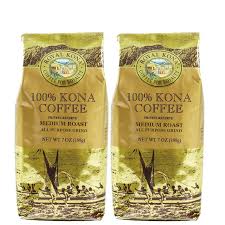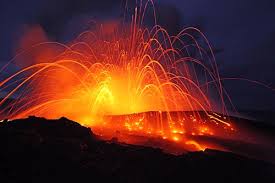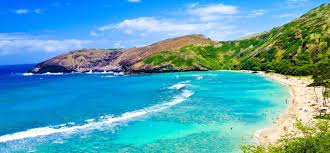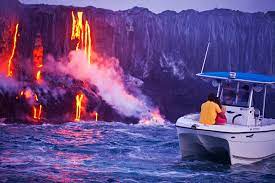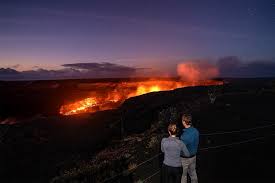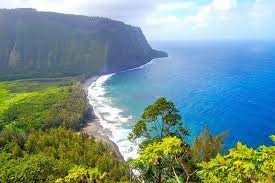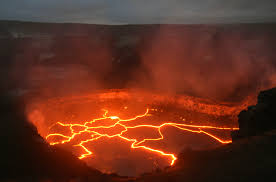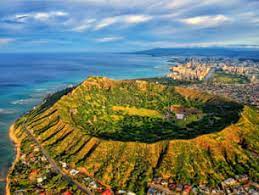
Hawaii, the tropical paradise in the middle of the Pacific Ocean, is renowned for its stunning natural beauty, warm hospitality, and rich cultural heritage. With its diverse landscapes and unique attractions, this archipelago offers an array of major tourist destinations that cater to every traveler’s interests. Let’s explore some of the must-visit attractions in Hawaii.
Starting with Oahu, the most populous island, you’ll find the iconic Waikiki Beach. With its golden sands and crystal-clear waters, this world-famous beach is a hub of activity. Enjoy swimming, surfing, or simply basking in the sun while taking in breathtaking views of Diamond Head Crater.
For history enthusiasts, a visit to Pearl Harbor is a must. This historic site commemorates the tragic events of December 7th, 1941 when Japan attacked the U.S. Pacific Fleet. Explore exhibits at the Pearl Harbor Visitor Center and pay your respects at the USS Arizona Memorial.
Moving on to Maui, be sure to experience the Road to Hana. This scenic drive takes you along winding roads through lush rainforests and past cascading waterfalls. Stop at picturesque viewpoints like Wailua Lookout and explore hidden gems such as Ohe’o Gulch (also known as Seven Sacred Pools) in Haleakala National Park.
On Hawaii Island (also known as “The Big Island”), witness one of nature’s most incredible spectacles at Hawaii Volcanoes National Park. Marvel at active volcanoes like Kilauea and Mauna Loa, hike through lava fields, and learn about volcanic geology at the visitor center.
Kauai, known as “The Garden Isle,” offers its own unique attractions such as Waimea Canyon State Park. Often referred to as “The Grand Canyon of the Pacific,” this breathtaking natural wonder features vibrant red cliffs carved by centuries of erosion.
Lastly, Molokai provides an opportunity to immerse yourself in Hawaiian culture. Visit the Kalaupapa National Historical Park, a former leprosy colony that now serves as a reminder of the resilience and strength of its inhabitants.
These are just a few of the major tourist attractions that Hawaii has to offer. Whether you’re seeking adventure, relaxation, or cultural enrichment, this tropical paradise has something for everyone. So pack your bags, embrace the aloha spirit, and embark on an unforgettable journey through the enchanting islands of Hawaii.
Frequently Asked Questions: Major Tourist Attractions in Hawaii
- How many islands make up the state of Hawaii?
- What is the best time to visit Hawaii for tourism?
- Which island in Hawaii has the most popular tourist attractions?
- Are there any active volcanoes in Hawaii that tourists can visit?
- What are some famous beaches in Hawaii that tourists should visit?
- Are there any cultural festivals or events that take place in Hawaii?
- How can I get to the top of Diamond Head Crater on Oahu?
- Can tourists hike to the summit of Haleakala on Maui?
- Are there any guided tours available for exploring Pearl Harbor?
How many islands make up the state of Hawaii?
The state of Hawaii is made up of 137 islands, although only a few are inhabited. The eight main islands that are most well-known and frequently visited are Hawaii Island (also known as the Big Island), Maui, Oahu, Kauai, Molokai, Lanai, Niihau, and Kahoolawe. Each island offers its own unique charm and attractions, making Hawaii a diverse and captivating destination for travelers.
What is the best time to visit Hawaii for tourism?
The best time to visit Hawaii for tourism largely depends on your preferences and what you hope to experience during your trip. However, there are a few factors to consider when planning your visit.
Weather-wise, Hawaii enjoys warm temperatures year-round, with average highs ranging from the mid-70s to mid-80s Fahrenheit (24-29 degrees Celsius). The islands experience two main seasons: the dry season (kau) from May to October and the wet season (ho’oilo) from November to April.
If you prefer drier weather and want to spend more time at the beach or engaging in outdoor activities, the dry season is generally considered the best time to visit. During these months, you can expect less rainfall and more sunshine. The summer months of June through August are particularly popular for tourism due to school vacations and pleasant weather.
However, it’s important to note that even during the wet season, rainfall in Hawaii is often localized and sporadic. You can still enjoy many activities during this time, as rain showers tend to be brief and followed by sunshine.
Another factor to consider is crowd levels. Hawaii attracts tourists throughout the year, but peak tourist seasons coincide with major holidays and school breaks. This includes Christmas/New Year’s, spring break (March/April), and summer vacation (June/July). If you prefer fewer crowds and lower accommodation prices, consider visiting during shoulder seasons like April/May or September/October.
Additionally, if you’re interested in specific events or festivals in Hawaii, it’s worth researching their dates as they may influence your travel plans.
Ultimately, Hawaii’s beauty and attractions can be enjoyed year-round. Whether you choose to visit during the dry season for optimal beach weather or during a quieter period for a more relaxed experience, this tropical paradise will captivate you with its natural wonders and warm hospitality whenever you decide to go.
Which island in Hawaii has the most popular tourist attractions?
Among the Hawaiian islands, Oahu is often considered to have the most popular tourist attractions. This is primarily due to its capital city, Honolulu, which offers a plethora of activities and sights for visitors. Oahu is home to the world-famous Waikiki Beach, where tourists can enjoy sunbathing, swimming, and surfing against the backdrop of Diamond Head Crater.
In addition to Waikiki Beach, Oahu boasts historical landmarks like Pearl Harbor, where visitors can pay their respects at the USS Arizona Memorial and explore various exhibits at the Pearl Harbor Visitor Center. The island also features cultural sites such as the Polynesian Cultural Center and Iolani Palace, which provide insights into Hawaiian history and traditions.
Oahu’s North Shore is renowned for its massive winter waves that attract professional surfers from around the globe. During this time, spectators gather along Sunset Beach and Banzai Pipeline to witness thrilling surf competitions.
Furthermore, Oahu offers a vibrant dining scene with diverse culinary options ranging from traditional Hawaiian cuisine to international flavors. Shopping enthusiasts can explore luxury boutiques in Waikiki or visit local markets like Ala Moana Center.
While Oahu stands out for its bustling urban environment and numerous tourist attractions, it’s important to note that each Hawaiian island has its own unique charm and appeal. Whether you’re seeking adventure or relaxation, exploring multiple islands allows you to experience the diverse landscapes and cultural richness that Hawaii has to offer.
Are there any active volcanoes in Hawaii that tourists can visit?
Absolutely! Hawaii is home to some of the most active volcanoes in the world. One such volcano is Kilauea, located on the southeastern side of Hawaii Island (the Big Island). Kilauea has been continuously erupting since 1983, making it one of the longest-lasting eruptions in recorded history.
Visitors have the opportunity to witness the raw power and beauty of Kilauea by visiting Hawaii Volcanoes National Park. Here, you can explore various hiking trails that take you through lava fields, steam vents, and volcanic craters. The Jaggar Museum and Hawaiian Volcano Observatory offer educational exhibits about volcanology and provide information on the current volcanic activity.
It’s important to note that volcanic activity can vary over time, so it’s always recommended to check with local authorities or the National Park Service for any safety advisories or closures before planning your visit. Safety measures are in place to ensure visitors can enjoy these natural wonders while minimizing risks associated with volcanic activity.
Experiencing an active volcano up close is a truly awe-inspiring and humbling experience. Witnessing the fiery lava flows and hearing the rumbling sounds of an erupting volcano is a unique opportunity that attracts countless visitors to Hawaii every year.
What are some famous beaches in Hawaii that tourists should visit?
Hawaii is renowned for its stunning beaches, each offering its own unique charm and beauty. Here are some famous beaches in Hawaii that tourists should visit:
- Waikiki Beach, Oahu: Located in Honolulu, Waikiki Beach is one of the most famous and iconic beaches in the world. With its golden sands, gentle waves, and vibrant atmosphere, it’s perfect for swimming, sunbathing, and learning to surf.
- Kaanapali Beach, Maui: Situated on Maui’s western coast, Kaanapali Beach stretches for three miles and offers pristine white sands and crystal-clear waters. It’s a popular spot for snorkeling, paddleboarding, and watching breathtaking sunsets.
- Hapuna Beach State Recreation Area, Big Island: Considered one of Hawaii’s best white sand beaches, Hapuna Beach boasts turquoise waters and a wide shoreline ideal for sunbathing or building sandcastles. It’s also great for swimming and bodyboarding.
- Poipu Beach Park, Kauai: Located on Kauai’s sunny south shore, Poipu Beach Park is a family-friendly destination with calm waters perfect for swimming and snorkeling. It often offers opportunities to spot Hawaiian green sea turtles or “honu.”
- Lanikai Beach, Oahu: Nestled in the residential area of Kailua on Oahu’s windward side, Lanikai Beach is known for its powdery soft sands and clear turquoise waters. The picturesque Mokulua Islands offshore make it a popular spot for kayaking and stand-up paddleboarding.
- Napili Bay Beach, Maui: This crescent-shaped beach on Maui’s northwest coast is known for its tranquil atmosphere and excellent snorkeling conditions. Visitors can often swim alongside colorful tropical fish or encounter graceful sea turtles.
- Hanalei Bay Beach, Kauai: Set against the backdrop of lush green mountains, Hanalei Bay Beach is a postcard-perfect destination. It offers a wide sandy beach, great waves for surfing, and breathtaking views of the surrounding natural beauty.
Remember to check local conditions, including surf and weather reports, and respect any safety guidelines or warnings provided. These famous beaches in Hawaii are just a glimpse of the island’s coastal wonders, inviting visitors to relax, soak up the sun, and experience the true essence of paradise.
Are there any cultural festivals or events that take place in Hawaii?
Absolutely! Hawaii is known for its vibrant cultural festivals and events that showcase the rich traditions and diverse heritage of the islands. Here are some notable celebrations you won’t want to miss:
- Merrie Monarch Festival (Hilo, Hawaii Island): Held annually in April, this renowned hula competition is a celebration of Hawaiian culture and dance. Hula halau (schools) from across the islands and even internationally come together to showcase their skills in both traditional and contemporary hula.
- Aloha Festivals (Various Islands): This month-long series of events takes place in September on different islands, including Oahu, Maui, Kauai, and Hawaii Island. The festivities include parades, street parties, live music performances, hula shows, craft fairs, and more. It’s a wonderful opportunity to experience the aloha spirit and immerse yourself in Hawaiian traditions.
- Honolulu Festival (Oahu): Held annually in March, this three-day event celebrates the cultural diversity of Hawaii and the Asia-Pacific region. Enjoy breathtaking parades featuring colorful floats, traditional dances from various cultures, live music performances, arts and crafts exhibits, culinary delights, and a grand fireworks display.
- Lei Day Celebration (Oahu): Taking place on May 1st each year, Lei Day honors the artistry and significance of lei-making in Hawaiian culture. Festivities include lei-making demonstrations, contests showcasing beautiful lei creations made from flowers or other materials like shells or feathers, live music performances, hula shows, and cultural displays.
- Koloa Plantation Days (Kauai): This ten-day festival held in July celebrates Kauai’s sugar plantation heritage with a variety of events such as historical walks and talks about plantation life, music concerts featuring local artists performing traditional Hawaiian songs as well as contemporary tunes influenced by plantation culture.
These are just a few examples of the many cultural festivals and events that take place throughout the year in Hawaii. Attending these celebrations is a fantastic way to connect with the local community, learn about Hawaiian traditions, and create lasting memories of your visit to the islands.
How can I get to the top of Diamond Head Crater on Oahu?
To reach the top of Diamond Head Crater on Oahu, follow these steps:
- Start by making your way to Diamond Head State Monument, located on the southeastern coast of Oahu, just east of Waikiki. You can drive there or take a taxi or rideshare service.
- Upon arrival, you’ll find a designated parking area where you can leave your vehicle. Keep in mind that parking spaces might be limited, so it’s advisable to arrive early or consider alternative transportation.
- The entrance fee for Diamond Head State Monument is typically required, and it helps support the maintenance and preservation of the area. Be prepared to pay this fee before proceeding.
- Once inside the monument, you’ll embark on a moderate hiking trail that leads to the summit of Diamond Head Crater. The trail is approximately 0.8 miles (1.3 kilometers) long and includes a combination of paved paths, stairs, and tunnels.
- As you ascend, enjoy panoramic views of the surrounding coastline and Honolulu skyline. Take your time to appreciate the unique geological features and lush vegetation along the way.
- Near the top, you’ll encounter a spiral staircase that leads to an observation deck situated within an old military bunker. From this vantage point, soak in breathtaking vistas of Waikiki Beach and the Pacific Ocean.
- After taking in the stunning scenery and capturing memorable photos, retrace your steps back down to complete your hike.
Remember to wear comfortable walking shoes, bring water to stay hydrated during your ascent, and apply sunscreen for sun protection as parts of the trail are exposed to direct sunlight.
With its rewarding views and captivating natural surroundings, reaching the top of Diamond Head Crater is an experience not to be missed during your visit to Oahu!
Can tourists hike to the summit of Haleakala on Maui?
Yes, tourists can hike to the summit of Haleakala on Maui. Haleakala National Park offers several hiking trails that lead to the summit, providing visitors with the opportunity to experience the majestic beauty of this dormant volcano up close.
One popular trail is the Halemau’u Trail, which starts at the Haleakala Visitor Center and takes hikers through a diverse landscape of cinder cones, lava flows, and native vegetation. This moderately challenging trail offers stunning panoramic views along the way.
Another option is the Sliding Sands Trail, also known as Keonehe’ehe’e Trail. This trail begins at the summit area and descends into the crater, offering hikers a unique perspective of Haleakala’s otherworldly terrain. It is a longer and more strenuous trail, so proper preparation and hiking experience are recommended.
It’s important to note that hiking to the summit of Haleakala requires advanced planning. Permits may be required for certain trails or activities within the park, so it’s advisable to check with the National Park Service or visitor center for any necessary permits or restrictions.
Additionally, due to high elevation and unpredictable weather conditions at the summit (over 10,000 feet above sea level), it’s essential for hikers to be well-prepared with appropriate clothing layers, sun protection, water, snacks, and sturdy footwear.
Hiking to the summit of Haleakala can be a memorable adventure for those seeking an active exploration of Maui’s natural wonders. Just remember to respect the environment and follow all safety guidelines provided by park officials for an enjoyable and safe experience.
Are there any guided tours available for exploring Pearl Harbor?
Absolutely! There are several guided tours available for exploring Pearl Harbor, providing visitors with a comprehensive and informative experience. These tours often include transportation, knowledgeable guides, and access to various sites within Pearl Harbor. Here are a few popular options:
- USS Arizona Memorial & Pearl Harbor Tour: This tour typically includes a visit to the USS Arizona Memorial, where you can pay your respects to the fallen sailors of the attack on Pearl Harbor. It may also include visits to other significant sites such as the USS Missouri Battleship and the Pacific Aviation Museum.
- Pearl Harbor & Honolulu City Tour: This tour combines a visit to Pearl Harbor with a guided tour of Honolulu’s iconic landmarks, such as Iolani Palace, King Kamehameha Statue, and the Punchbowl National Cemetery.
- Deluxe Pearl Harbor Tour: This comprehensive tour provides an in-depth exploration of Pearl Harbor’s historical sites, including the USS Arizona Memorial, USS Bowfin Submarine Museum, and Pacific Aviation Museum. It often includes lunch and transportation from your hotel.
- Private Guided Tours: For a more personalized experience, private guided tours are available. These tours allow you to customize your itinerary based on your interests and spend more time at specific sites within Pearl Harbor.
It’s recommended to book your tour in advance as they can be quite popular and have limited availability. These guided tours offer valuable insights into the history and significance of Pearl Harbor while ensuring a smooth and enriching experience for visitors.
